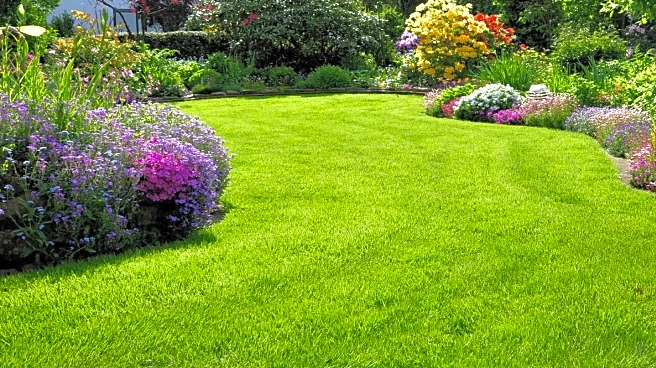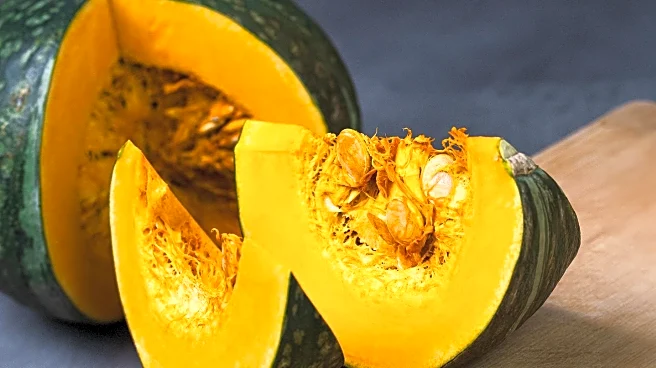What's Happening?
As fall approaches, lawn care experts from Lowe's and Scotts are providing guidance on preparing yards for the upcoming winter season to ensure a healthy start in spring. Key recommendations include applying
fall fertilizers to strengthen grass and repair roots damaged by summer heat. Scotts Turf Builder WinterGuard is suggested for early fall application to feed the lawn and eliminate weeds. Additionally, repairing bare spots and aerating compacted soil are advised to promote better grass growth. Mowing grass shorter in the fall, gradually reducing its height to 2-2.5 inches, is recommended to prevent disease and enhance energy storage. Raking leaves is emphasized to prevent smothering grass and to allow it to breathe, with the option to mulch leaves for natural fertilization.
Why It's Important?
Proper fall lawn care is crucial for maintaining healthy yards, which can lead to reduced maintenance costs and improved curb appeal. By following expert advice, homeowners can prevent common issues such as weed overgrowth and soil compaction, which can hinder grass growth. The application of fertilizers and strategic mowing can enhance the lawn's resilience against winter conditions, ensuring a lush and vibrant yard in spring. This proactive approach can save homeowners time and money in the long run, as well-maintained lawns require less intervention and repair.
What's Next?
Homeowners are encouraged to implement these fall lawn care strategies promptly to maximize their effectiveness. As the first frost approaches, applying the recommended fertilizers and completing necessary repairs will be essential. Monitoring weather patterns for optimal timing and ensuring regular watering of newly seeded areas will support successful growth. Lawn care companies may see increased demand for products and services as homeowners seek to follow expert advice, potentially leading to seasonal promotions and educational campaigns.
Beyond the Headlines
The emphasis on sustainable lawn care practices, such as using natural fertilizers and mulching leaves, reflects a growing trend towards environmentally friendly gardening. This approach not only benefits individual homeowners but also contributes to broader ecological health by reducing chemical runoff and promoting biodiversity. As awareness of climate change impacts grows, such practices may become more mainstream, influencing industry standards and consumer preferences.












